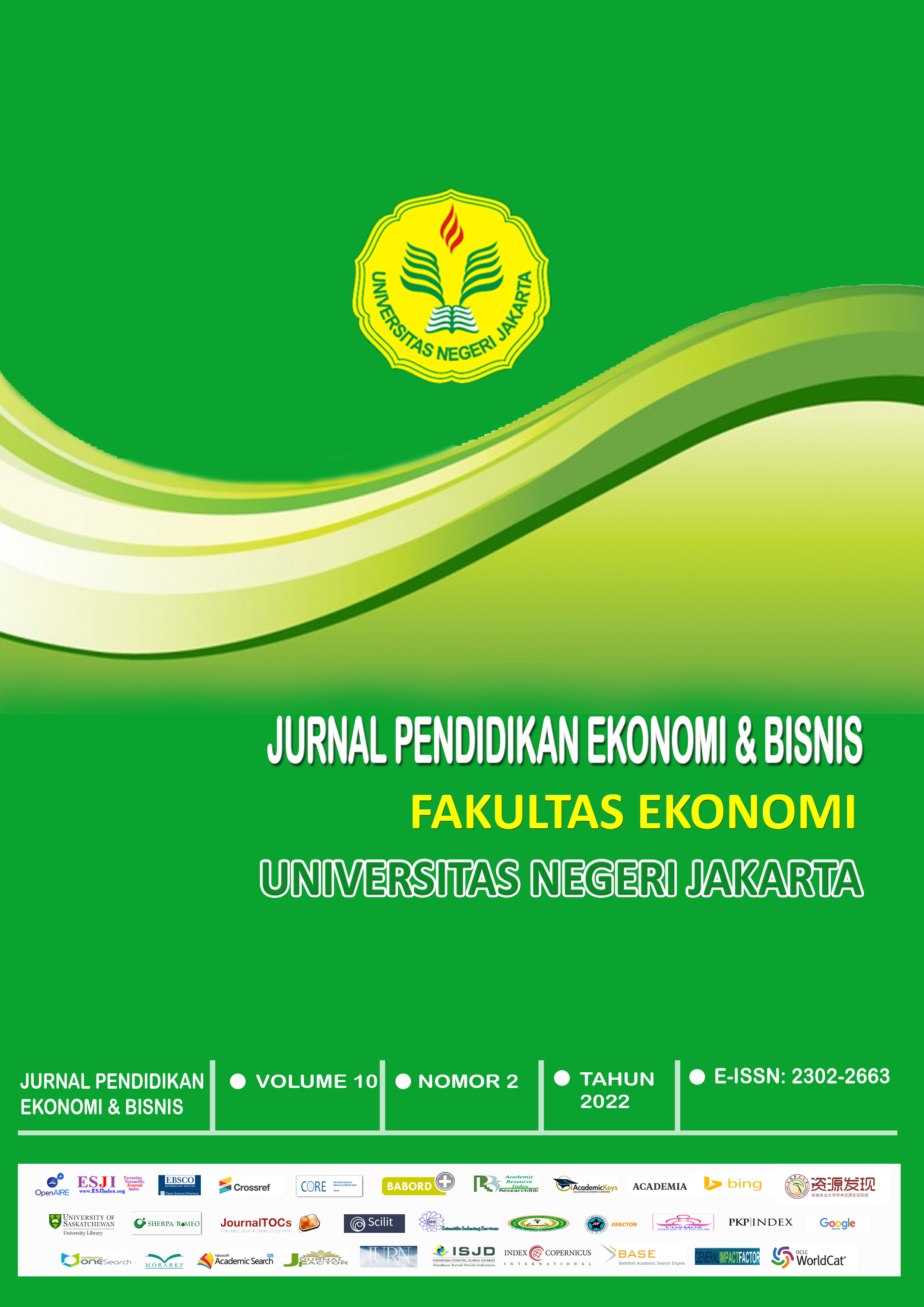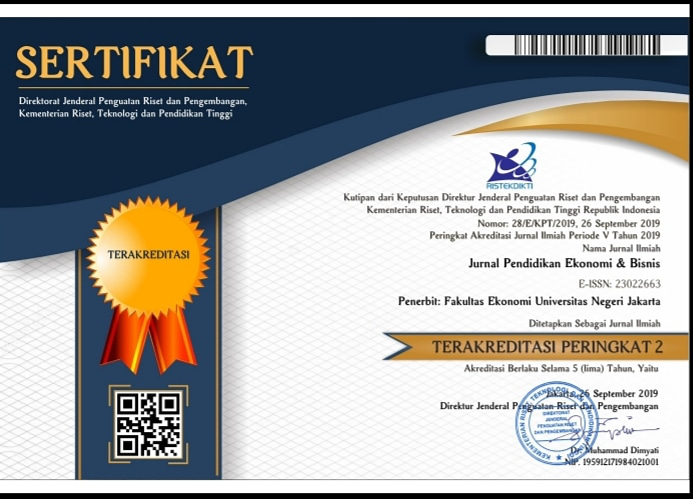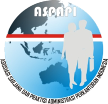The Readiness of Indonesian Youths Towards the Era of Digital Economy and Business
DOI:
https://doi.org/10.21009/JPEB.010.2.6Keywords:
Digital Economy, Digital Skills, Financial Life Skills, Financial Literacy, Soft SkillsAbstract
The world is moving towards the digital economy and business era. Making Indonesia 4.0 was launched to prepare Indonesia ready to face the waves of change towards the Industrial 4.0 era and to be able to increase its competitiveness in the global arena. This study will share new insights into the level of readiness of the Indonesian youth to face the impact of digitalization. This study involved 8,347 youths aged 18-34 in Java who took online Financial Life Skills (FLS) training from June 2020 to April 2021. Cross-sectional data were collected through questionnaires and analyzed using an exploratory method. This study concluded that the readiness of Indonesian youth toward the digital economy and business era was still in the "developing readiness" stage and had not been supported by adequate financial literacy and digital skills. The higher readiness scores came from the youth group having a job, previous work experience, or having participated in financial literacy or soft skills training. To be better prepared to face the rapid change of the Industrial Revolution, youth need to be equipped with future skills development programs that will improve their digital skill, financial literacy, and soft skills required to complete future jobs.
Downloads
Published
How to Cite
Issue
Section
License
Articles in Jurnal Pendidikan Ekonomi & Bisnis are Open Access articles published under the Creative Commons CC BY-NC-SA License This license permits use, distribution and reproduction in any medium for non-commercial purposes only, provided the original work and source is properly cited. Any derivative of the original must be distributed under the same license as the original.








